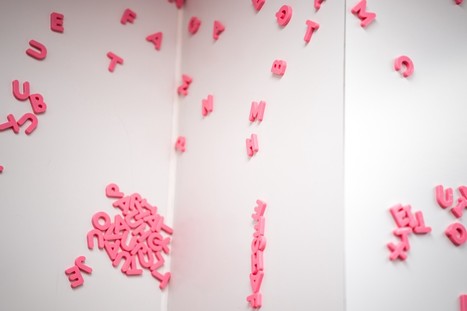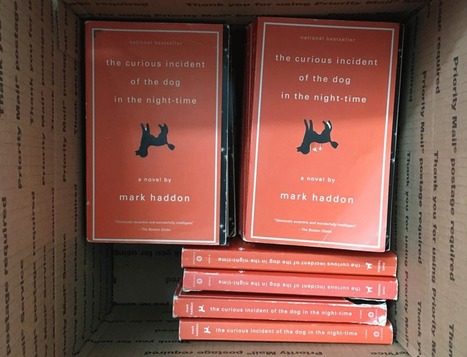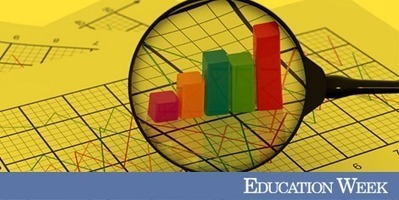 Your new post is loading...
 Your new post is loading...

|
Scooped by
John Evans
May 6, 2019 10:53 AM
|
We have been teaching students how to become better readers and writers for years. With mentor texts, we teach our students about the different genres, text structures, and features that exist within books. Students learn how to identify characters and plots, retell events, or set up a table of contents to reflect the main idea and details of a new writing piece.
The good news is, we can use these same instructional choices during our math instruction. Just as books have a variety of text structures (narrative, informational, biographical) and features (characters, events, language, labels) so too, do math word problems. When we show students how to identify these structures and features within math problems, we increase their ability to comprehend them, solve them, and eventually become the authors of their own math stories. Research shows that readers who can identify the structure of a text are better able to locate the information they need for successful comprehension (Williams, J.P., 2003). This is exactly the result we are looking for when students are solving word problems. We want students to identify the text structure of a math problem, recognize which part is missing, and use questions and known relationships to solve for the missing value.
Every January, Nashville teacher Joel Bezaire reads The Curious Incident of the Dog in the Night-Time aloud to his students. Sounds pretty standard, right? It would be — for an English class. But Bezaire teaches math. The novel is part of a unit on number sense.
While it’s easy to envision using math picture books in elementary school classrooms, literature for older grades poses a bigger challenge. Can reading fit into the curriculum as the books get longer and the math gets more complex?
Bezaire thinks it can, and so does another teacher, Sam Shah, of Brooklyn. The two occupy opposite ends of the secondary math spectrum — seventh-grade pre-algebra and 12th-grade calculus, respectively — and both have found ways to strengthen student engagement through reading.

|
Scooped by
John Evans
February 15, 2018 6:05 AM
|
What is your most memorable math lesson? For me, it was when Mrs. Kaylor helped us visualize and understand place value by building straw men as we counted straws by units of one, ten, and a hundred.
I struggle to come up with many more memories and there's a good chance I'm not alone. If I asked the same question for other subjects, like social studies or language arts, however, I bet your answers would come a lot more easily.
The difference? These subjects include lessons that are often applicable to real life. Whether it's a mock trial, a school play, or a science experiment, project work deepens student learning by allowing them to explore the connections between content and real life.
Math lessons, on the other hand, have historically focused less on real-life connections. Like many students, I excelled in math by memorizing rules and tricks. In college, I trained to teach social studies, but became a math teacher by accident because I had earned enough math credits to qualify for a math teaching certification. It wasn't until I returned to earn a master's in math education that I discovered that math can be so much more than memorization.
|

|
Scooped by
John Evans
March 20, 2018 8:09 AM
|
Every January, Nashville teacher Joel Bezaire reads The Curious Incident of the Dog in the Night-Time aloud to his students. Sounds pretty standard, right? It would be — for an English class. But Bezaire teaches math. The novel is part of a unit on number sense.
While it’s easy to envision using math picture books in elementary school classrooms, literature for older grades poses a bigger challenge. Can reading fit into the curriculum as the books get longer and the math gets more complex?
Bezaire thinks it can, and so does another teacher, Sam Shah, of Brooklyn. The two occupy opposite ends of the secondary math spectrum — seventh-grade pre-algebra and 12th-grade calculus, respectively — and both have found ways to strengthen student engagement through reading.

|
Scooped by
John Evans
March 14, 2018 6:15 AM
|
The benefits of even high-quality preschool programs tend to fade over time, but extracurricular programs in early grades may help boost the good effects of early education after students start school, according to a new longitudinal study by the research firm MDRC.
Low-income students who participated in both a math-focused preschool curriculum and extracurricular math clubs during their first year of school closed nearly 30 percent of the math achievement gap between themselves and their wealthier peers by the end of kindergarten, the study showed.
|
 Your new post is loading...
Your new post is loading...
 Your new post is loading...
Your new post is loading...













